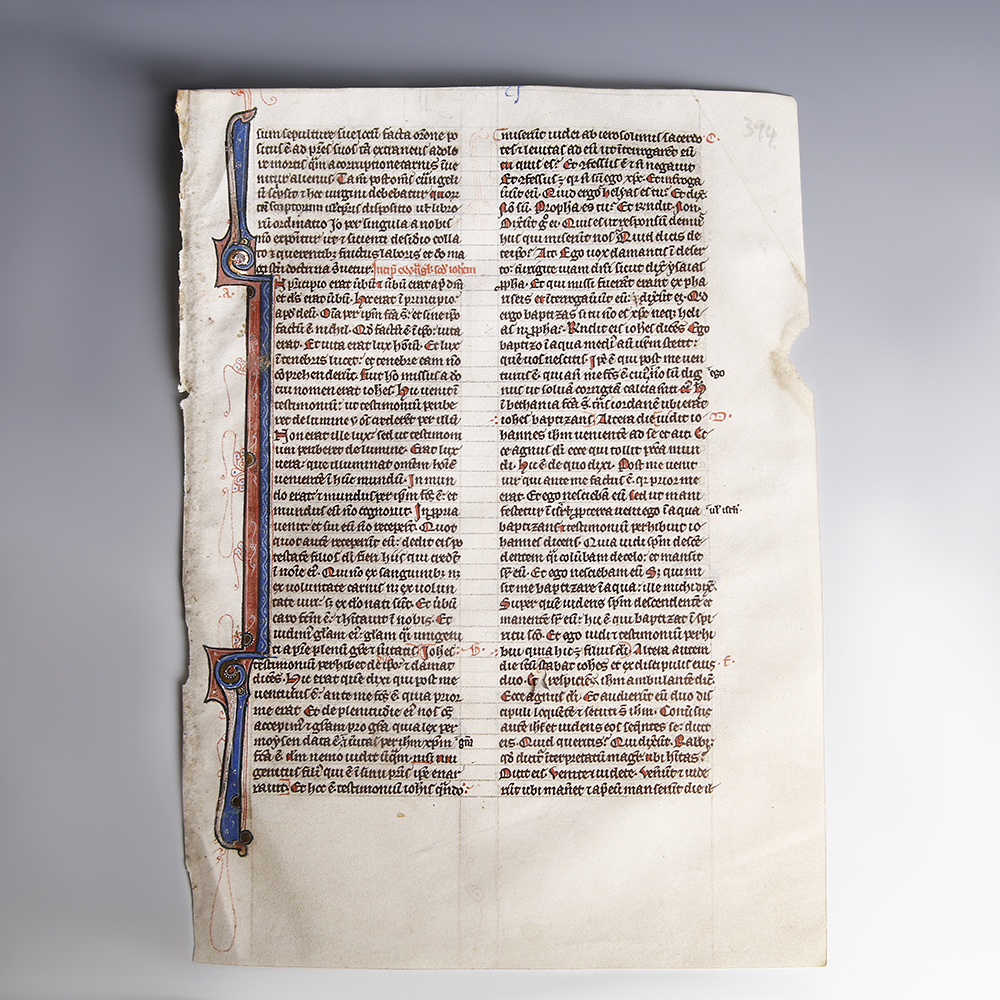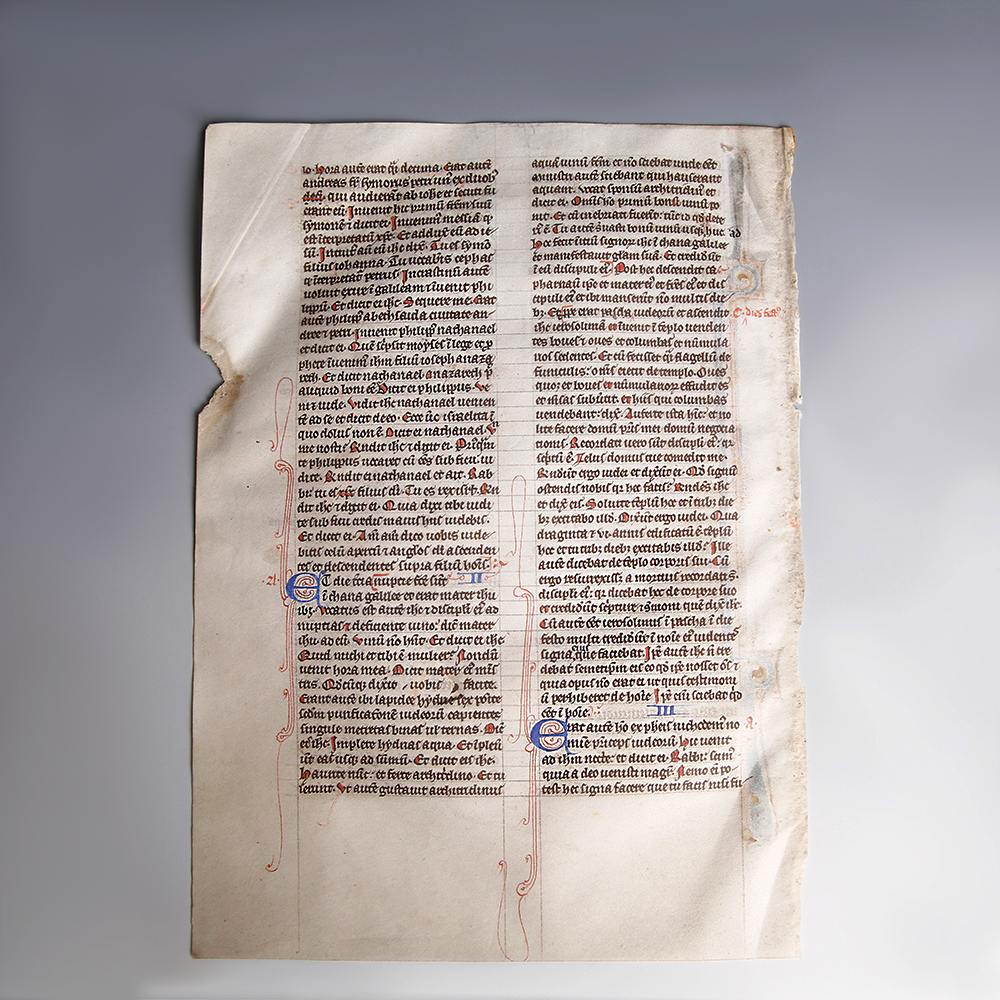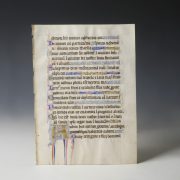The Middle Ages in Europe saw a rise in the creation of the codex, as especially dedicated monks, known as amanuensis, devoted their lives to the recording of documents into manuscripts. The preciousness of these books translated into a proper art form, as decoration was introduced to the text and illuminated manuscripts became an artistic exercise that combined beauty with daily life objects. Bibles and special prayerbooks, called Book of Hours, were enriched with incredibly intricate designs with floral and animal motifs; gold leaf was often employed and calligraphy was used in an artistic fashion. Religious texts were of great importance, though many classical Greek and Latin literary works have survived to this day thanks to the patient work of the amanuensis, who recorded the ancient versions of the texts discovered in libraries across all of Europe, and circulated them spreading culture and leading to the establishment of universities.
The Vulgate Bible is a late 4th century Latin translation of the Bible, commissioned by Pope Damasus I in AD 382 and affirmed as the official Bible of the Catholic Church at the Council of Trent (1545-1563). The translation was predominantly the work of St. Jerome, who revised the Vetus Latina text of the four Gospels using the original Greek writings as reference. Often portrayed in his study or accompanied by a lion, famous among the many is the painting by Antonello da Messina exhibited at the National Gallery in London, St. Jerome was the leading biblical scholar of his time. He was known for his numerous biblical and theological work, as well as his teachings on Christian moral life, which profoundly influenced the early Middle Ages. Pocket bibles produced in England during this period, such as this example, are recognisable by the script and the style of illumination, and, in contrast to those most commonly produced in France, they omitted the Book of Psalms.
To find out more about Medieval manuscripts please see our relevant blog post: Illuminated Manuscripts and Vellum Pages.


